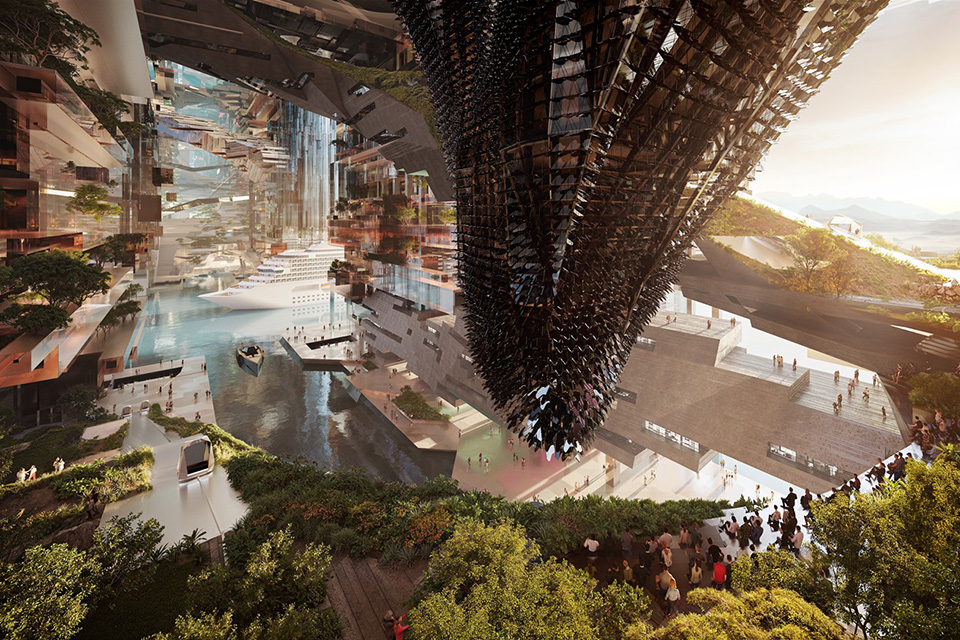- News
Inbound Visitor Spending in H1 2024 Hits USD 24.6 Billion
The surge in inbound visitor spending marks the kingdom’s growing success in strengthening its tourism sector, aligned with Vision 2030 goals.
Article Summary:
- Saudi Arabia’s Ministry of Tourism reports that inbound visitor spending within the first half of 2024 reached USD 24.6 billion (SAR 92.6 billion).
- Factors such as the kingdom’s massive investment in tourism infrastructure and giga-projects contributed to this milestone.
- This development underscores the broader Saudi Vision 2030 goal of diversifying the kingdom’s economy away from petroleum through sectors such as tourism.
Saudi Arabia has witnessed an 8.2% surge in inbound visitor spending during the first half of 2024 compared to 2023. According to the Ministry of Tourism, international tourist spending, in particular, reached SAR 92.6 billion ($24.7 billion) during this period. This amount is part of the USD 40 billion tourist expenditure also within the first half of 2024. This growth reflects the country’s ongoing efforts to strengthen its tourism sector under Vision 2030.
This development highlights a significant shift in visitor behavior, with more international tourists choosing Saudi Arabia as a travel destination. In comparison to 2023, inbound spending was lower. In 2023, the kingdom welcomed 109 million visitors, marking the achievement of their 2030 goal of attracting 100 million visitors. This goal has since been adjusted to 150 million visitors annually by 2030.
But the Saudi government has invested massively in tourism offerings and infrastructure, many of which are gaining progress in 2024. By capitalizing on its unique cultural heritage and modern facilities, Saudi Arabia hopes to attract visitors from different regions.
Inbound visitor spending: Key contributors
Several factors contributed to this surge in visitor spending. Firstly, Saudi Arabia has invested heavily in promoting itself as a global tourist destination. With its rich heritage, stunning natural landscapes, and modern developments like NEOM and Qiddiya, it’s been attracting global attention. Additionally, the expansion of religious tourism, especially for Umrah and Hajj, has driven more international arrivals.
Moreover, several government initiatives enhanced the overall visitor experience. For instance, they collaborated with the private sector and invested in modern hospitality infrastructure. In addition, they also introduced seamless visa processes, through the launch of the Saudi e-visa. These measures have helped the country draw more international visitors and increase their spending on accommodations, transportation, and leisure activities.
On the economic side, this tourism boom has directly impacted Saudi Arabia’s trade balance. The travel account recorded a surplus of SAR 41.6 billion during the first half of 2024. This underscores the broader Saudi goal of diversifying its economy away from oil dependence through sectors such as tourism.
Equally important to note is that Saudi Arabia led G20 countries in international tourist arrivals from January to July 2024. International tourist numbers increased by 73 percent and tourism revenue increased by 207 percent versus the same period in 2023. The ministry credited this success to the continued improvement of tourism-related services, infrastructure, and international collaborations.
In addition, leisure tourism also went up by 656 percent, also between January and July 2024. Moreover, this marked a 75 percent increase versus 2019 levels.
Creating opportunities
This surge in spending has also provided opportunities for local businesses, particularly in the hospitality, retail, and transportation sectors. Entrepreneurs are capitalizing on the increased demand for high-quality services tailored to international visitors. This influx is also expected to fuel further growth in these industries, contributing to Saudi Arabia’s long-term economic goals.
Looking ahead, Saudi Arabia remains committed to expanding its tourism offerings. Future plans include enhancing visitor experiences, promoting sustainable tourism, and leveraging new technologies to streamline services.
Image by freepik





